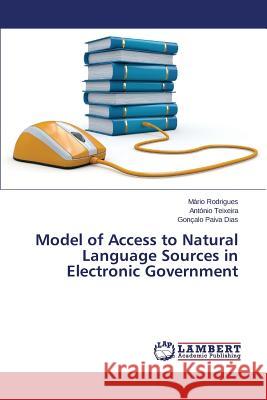Model of Access to Natural Language Sources in Electronic Government » książka
Model of Access to Natural Language Sources in Electronic Government
ISBN-13: 9783659582899 / Angielski / Miękka / 2015 / 204 str.
For the actual existence of e-government it is necessary and crucial to provide public information and documentation, and making its access simple to citizens. This book contributes with a study about developing e-government systems that process natural language to create structured semantic information which is automatically manipulated to meet citizens' needs and expectations. In order to put this to test, this work was developed in three major phases: (1) design of a conceptual model, in line with the vision of e-government, integrating the creation of structured information and making it available to various actors; (2) selection of state-of-the-art software tools and definition of a prototype instantiating the key modules of the conceptual model, including access based on natural language; (3) assessment of the usability and acceptability of querying information as made possible by the prototype - and in consequence of the conceptual model - by users in a realistic scenario, that includes comparison with forms of access available today in production systems. The evaluation results show that the proposed model was perceived as more effective and useful than the alternatives.
For the actual existence of e-government it is necessary and crucial to provide public information and documentation, and making its access simple to citizens. This book contributes with a study about developing e-government systems that process natural language to create structured semantic information which is automatically manipulated to meet citizens needs and expectations. In order to put this to test, this work was developed in three major phases: (1) design of a conceptual model, in line with the vision of e-government, integrating the creation of structured information and making it available to various actors; (2) selection of state-of-the-art software tools and definition of a prototype instantiating the key modules of the conceptual model, including access based on natural language; (3) assessment of the usability and acceptability of querying information as made possible by the prototype - and in consequence of the conceptual model - by users in a realistic scenario, that includes comparison with forms of access available today in production systems. The evaluation results show that the proposed model was perceived as more effective and useful than the alternatives.











